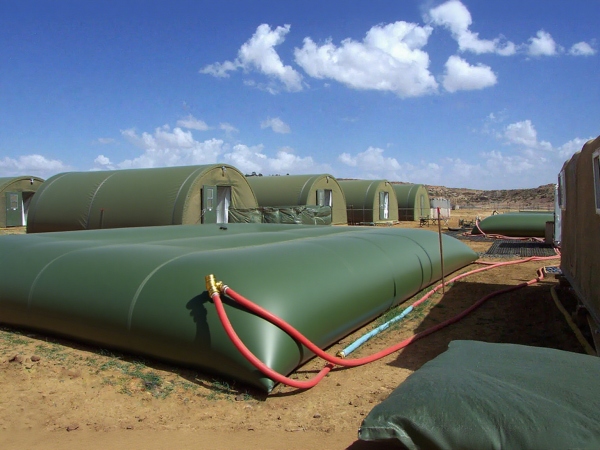PVC water bladder tarpaulin plays a critical role in temporary and long-term liquid storage across agriculture, construction, emergency relief, and industrial use. While most users focus on size, thickness, or price during purchase, very few pause to ask: how long will this last?
In this article, we break down the expected service life of PVC water bladder tarpaulin, what shortens it, how to prolong it, and when to consider a replacement. Whether you're already using one or about to invest in it, understanding its lifecycle helps you avoid premature failure and unnecessary costs.
What is PVC Water Bladder Tarpaulin?

PVC (polyvinyl chloride) water bladder tarpaulin is a specialized technical fabric engineered to hold large volumes of liquid without leaking, stretching, or degrading quickly. It's usually made by coating a high-tensile polyester base fabric with PVC on both sides, creating a waterproof, UV-resistant, and chemical-resistant barrier.
This type of tarpaulin is commonly used to manufacture collapsible water bladders or tanks, particularly for:
1. Irrigation storage
2. Firefighting water tanks
3. Rainwater harvesting
4. Emergency water supply
Its strength, flexibility, and ease of folding make it ideal for mobile or remote use.
How Long Does it Last?
Under typical usage, PVC water bladder tarpaulin can last 5 to 8 years, sometimes longer if used under ideal conditions. However, this range is highly dependent on how and where the product is used.
Indoor or shaded use: 7–10 years is not uncommon.
Outdoor, exposed to sun and abrasion: closer to 3–5 years.
Extreme environments (e.g. frequent freezing/thawing): lifespan may shorten to 2–3 years.
It's important to note that manufacturers often quote a technical lifespan based on lab tests—but real-world lifespan is shaped by daily habits and climate conditions.
Factors that Affect the Lifespan
Several factors can either preserve or destroy the integrity of PVC water bladder tarpaulin faster than expected:
UV Exposure: The number one enemy. Prolonged sunlight breaks down the plasticizers in PVC, causing brittleness, cracking, or color fading.
Mechanical Stress: Dragging the tank on rough surfaces or overfilling it can cause premature wear or pinhole leaks.
Chemical Contents: While PVC resists many chemicals, strong acids, oils, or solvents can accelerate material degradation.
Folding and Unfolding: Frequent handling without care can cause creases that eventually weaken the material.
Improper Storage: Storing the bladder wet or under pressure promotes microbial growth and weakens the seams.
Extreme Temperatures: PVC can become brittle in freezing cold or overly soft in extreme heat, affecting both handling and lifespan.
How to Extend the Lifespan of Water Bladder Tarpaulin?
Simple care can add years to the life of your water bladder tarpaulin. Here’s what experienced users recommend:
Use UV covers or shading if the bladder is placed outdoors long-term.
Place it on a clean, flat surface free from stones, nails, or sharp debris.
Avoid overfilling—most bladders are designed for 80–90% capacity to allow for expansion.
Drain and clean regularly using mild soap and fresh water to remove sediments or algae.
Dry completely before storage, and fold loosely to avoid sharp creases.
Use lifting handles or tarpaulin rollers instead of dragging the tank when moving it.
Regular inspection is also key, especially around seams, valves, and high-stress areas.
When Should You Replace PVC Water Bladder?
No matter how well you maintain it, all tarpaulin-based bladders have a service limit.
The following signs indicate it’s time for a replacement:
Visible cracks or stiffness—especially around folds or corners
Persistent leaks even after patching
Deformed or warped fabric that no longer holds shape when filled
Discoloration or mold that resists cleaning
Valve or weld failures indicating structural fatigue
Waiting too long to replace a failing bladder can result in sudden failure, leading to water loss, equipment damage, or safety hazards.
PVC water bladder tarpaulin is a practical and reliable solution for liquid storage, but it’s not forever. Treat it as a functional asset: choose wisely, maintain regularly, and know when to retire it. Doing so not only saves money but also ensures consistent performance and safety over time.
If you’re sourcing PVC tarpaulin for water bladders or similar projects, choosing a trusted supplier with quality assurance standards is the first step to a longer product life.






























